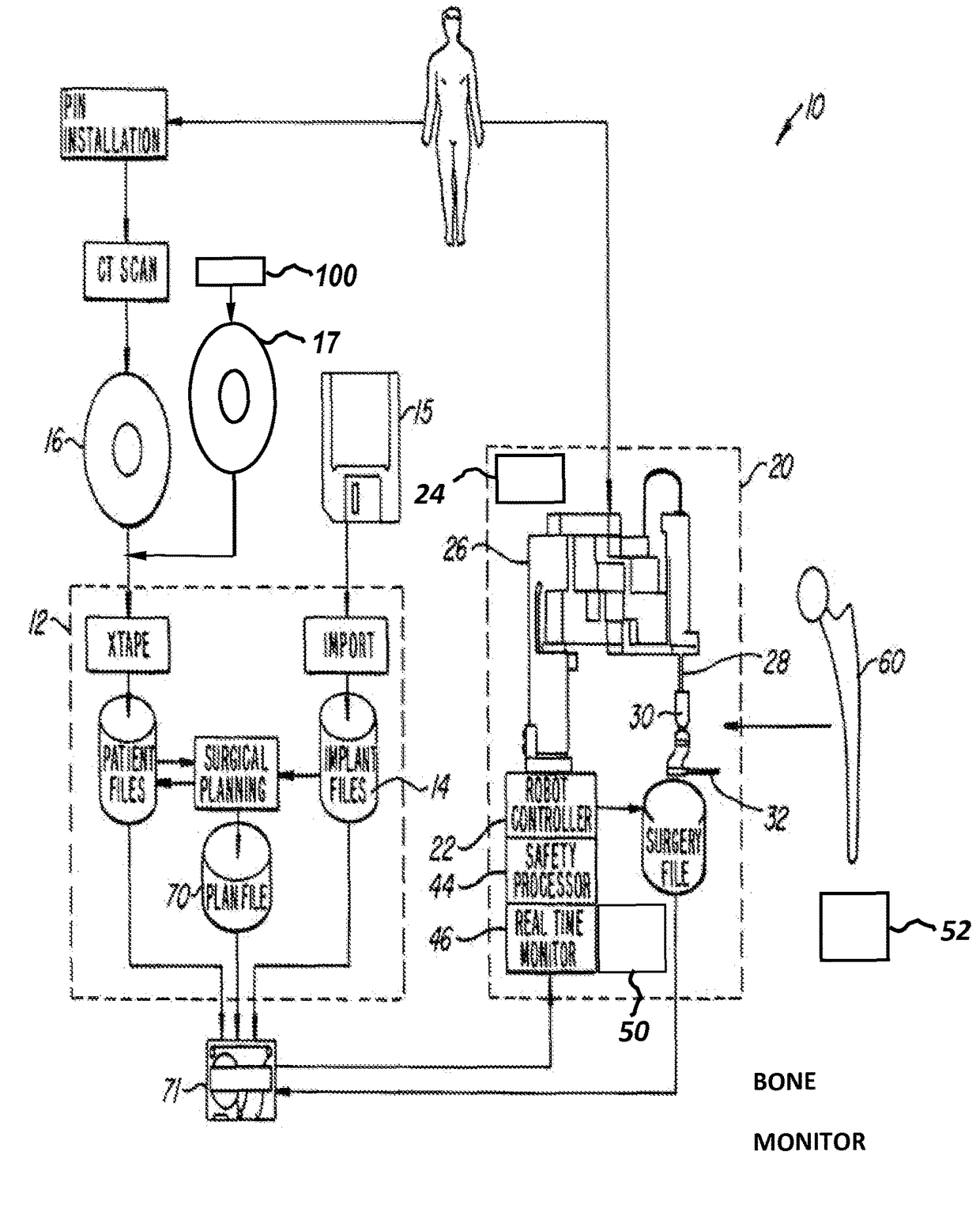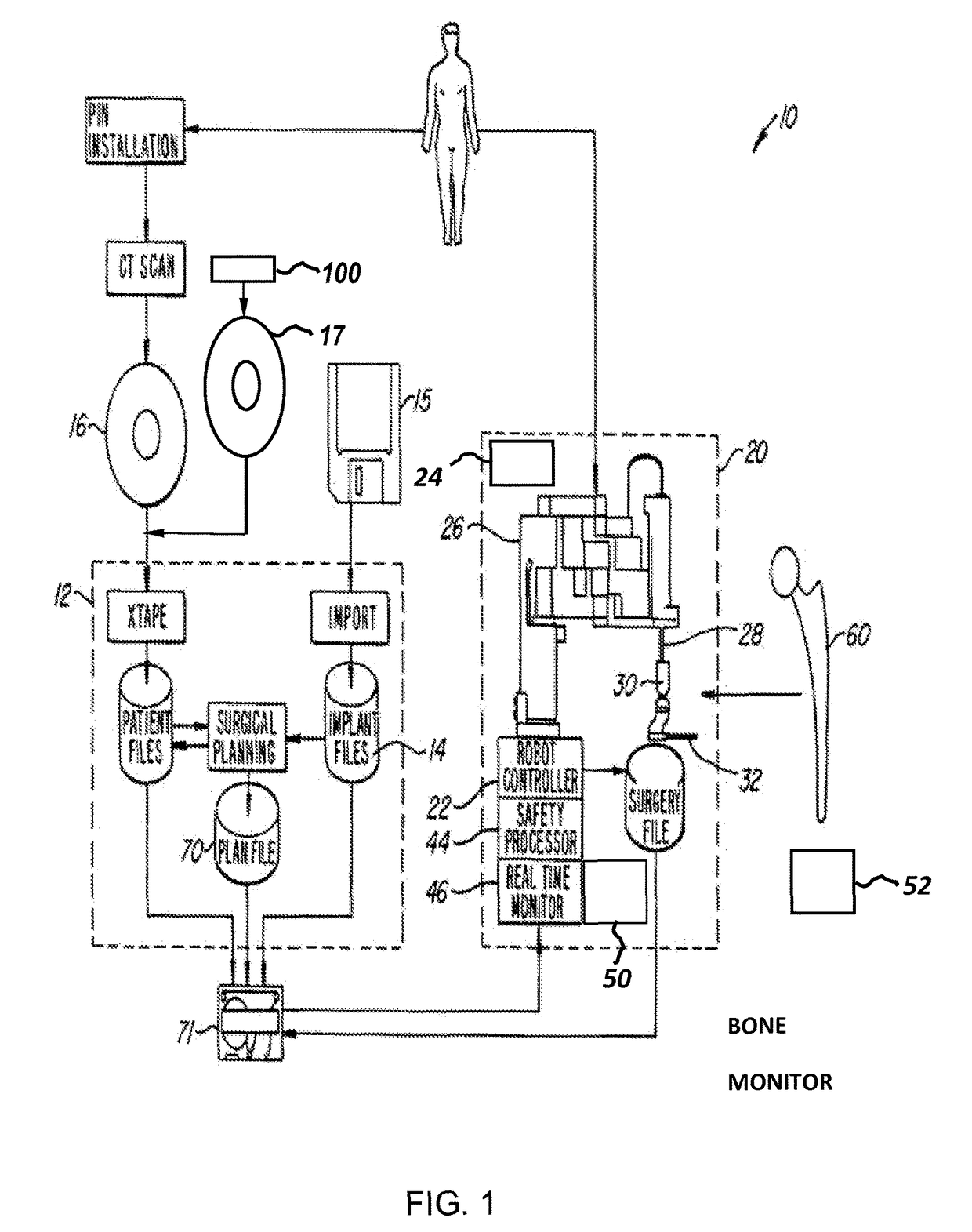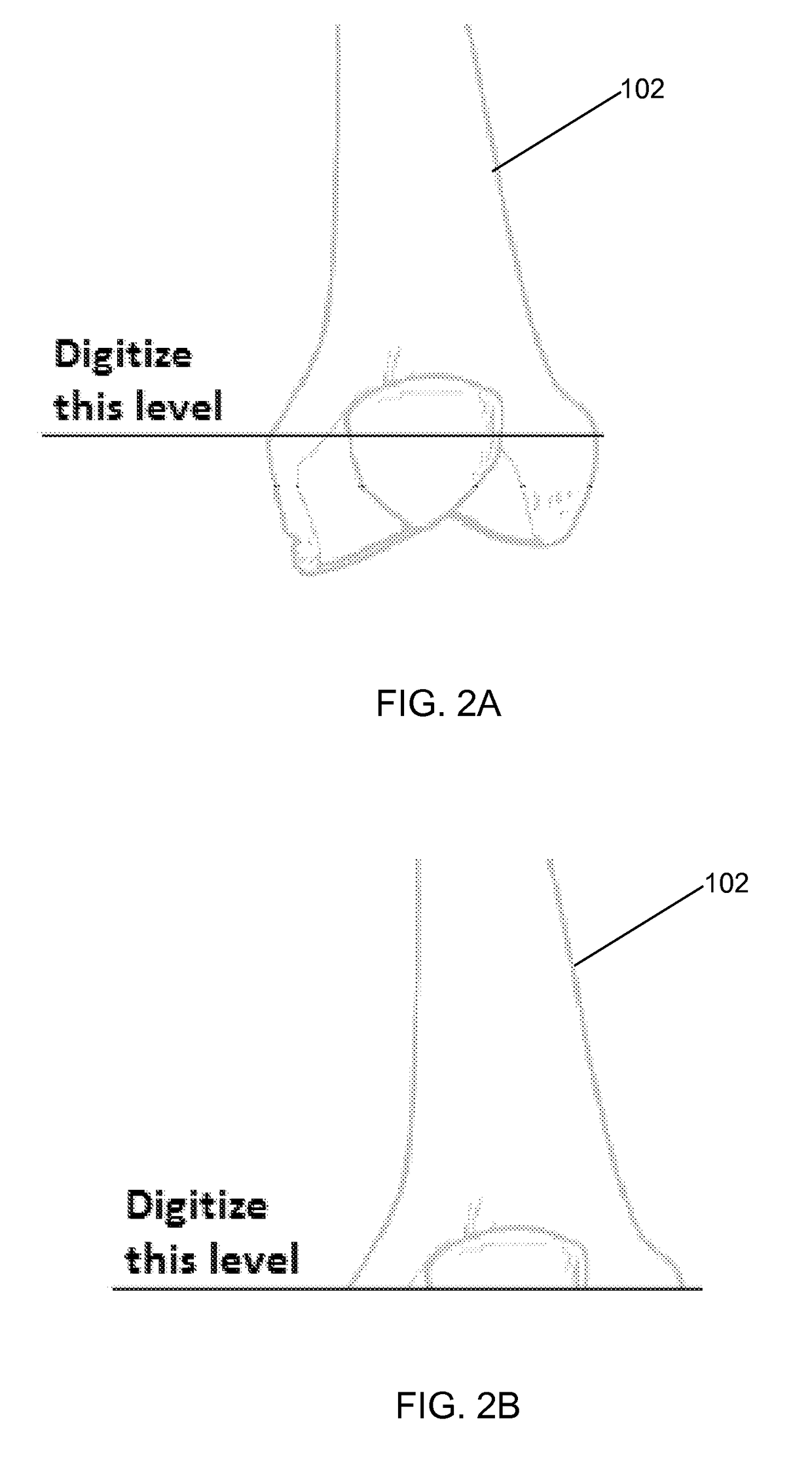Implant based planning, digitizing, and registration for total joint arthroplasty
a technology of total joint arthroplasty and implant based planning, applied in the direction of joint implants, bone drill guides, prosthesis, etc., can solve the problems of rtjr being a difficult and long procedure, requiring replacement, and limited life expectancy of replacement implants used in joint replacement surgeries
- Summary
- Abstract
- Description
- Claims
- Application Information
AI Technical Summary
Benefits of technology
Problems solved by technology
Method used
Image
Examples
example 1
Revision TKR Procedure (Restore Current Implant's Joint Line)
[0031]In an implementation of an embodiment of the inventive method for a revision TKR procedure to restore the joint line of the patient's current implant, the procedure is carried out in a three-step protocol which includes a pre-operative protocol, intraoperative protocol: registration, and intraoperative protocol: surgical procedure.
[0032]An embodiment of the pre-operative protocol of the inventive embodiment for the revision TKR includes the steps of: acquiring a CT scan of the operative bones with the installed implants; segmenting the installed implant from the volumetric data; segmenting the bone outside the implant region (this is for pre-operative planning only and is not required intraoperatively); determining the implant make / model / size, and registering the manufacturer's 3D model to the segmented implant in the patient, thus providing a transformation matrix between manufacturer's 3D model and the patient's DI...
example 2
Revision TKR Procedure (New Joint Line Perpendicular to Mechanical Axis)
[0035]In an implementation of an embodiment of the inventive method for a revision TKR to make a new joint line perpendicular to the mechanical axis, the procedure may be carried out in a three-step protocol that includes a pre-operative protocol, intraoperative protocol: registration, and intraoperative protocol: surgical procedure.
[0036]An embodiment of the pre-operative protocol of the inventive embodiment for the revision TKR includes: acquiring a CT scan of the bone with the installed implant; segmenting the installed implant; segmenting the bone outside the implant region: pre-operative planning only, and not required intraoperatively; determining the implant make / model / size, and registering the manufacturer's 3D model to the segmented implant in the patient, thus providing a transformation matrix between manufacturer's 3D model and the patient's DICOM data. The implant may be determined automatically by d...
example 3
Revision THR Procedure
[0039]In an implementation of an embodiment of the inventive method for revision THR to restore a hip implant, the procedure may be carried out in protocol steps that include a pre-operative protocol, and an intraoperative protocol: with registration and surgical procedures.
[0040]An embodiment of the pre-operative protocol of the inventive embodiment for the revision THR includes the steps of: acquiring a CT scan of the bone with the installed implant; segmenting the installed implant; segmenting the bone outside the implant region: for pre-operative planning only, and not required intraoperatively; determining the implant make / model / size, and registering the manufacturer's 3D model to the segmented implant in the patient, thus providing a transformation matrix between manufacturer's 3D model and the patient's DICOM data. The implant may be determined automatically by determining which implant make, model, and size best matches the segmented implant, or the imp...
PUM
 Login to View More
Login to View More Abstract
Description
Claims
Application Information
 Login to View More
Login to View More - R&D
- Intellectual Property
- Life Sciences
- Materials
- Tech Scout
- Unparalleled Data Quality
- Higher Quality Content
- 60% Fewer Hallucinations
Browse by: Latest US Patents, China's latest patents, Technical Efficacy Thesaurus, Application Domain, Technology Topic, Popular Technical Reports.
© 2025 PatSnap. All rights reserved.Legal|Privacy policy|Modern Slavery Act Transparency Statement|Sitemap|About US| Contact US: help@patsnap.com



